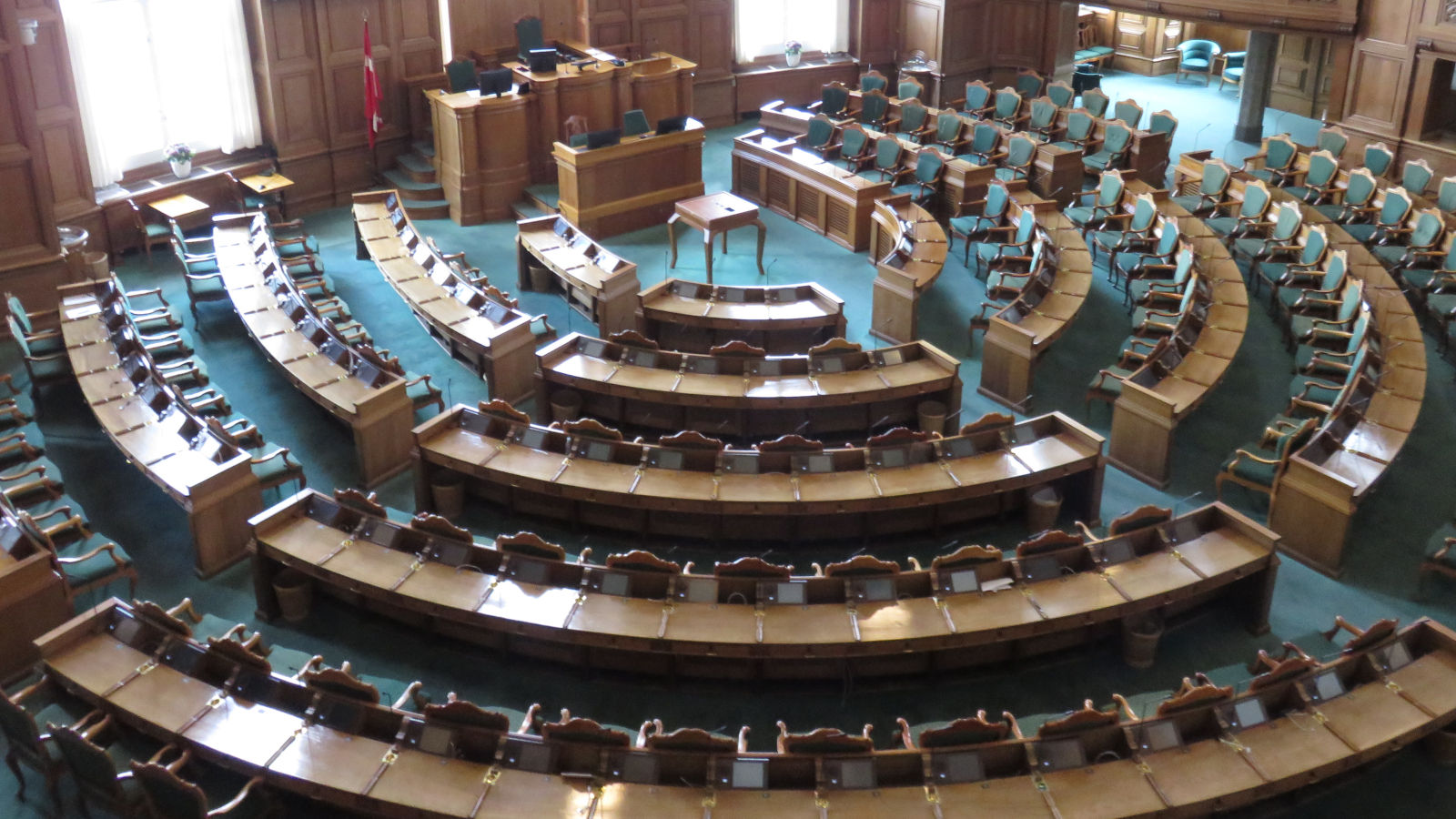At the time of publication of the latest Euroconstruct Report, in November 2022, Denmark had just had a general election, but a new government had not fallen into place.
In the end, the outcome was a somewhat different political situation, with several new parties in parliament. The government changed from a one-party, minority govt. of Social Democrats, supported by the left and left-centre side of parliament to a (semi-)majority coalition govt. of Social Democrats plus two parties to the right of the centre. These three parties total 89 of the 179 MPs, one seat short of a majority. However, one or more the two MPs from the Faroe Islands and the two from Greenland (both of which have home rule based on their own parliaments) may cooperate with the government, and in many cases abstain from voting in matters which do not directly influence them. Thus, in many situations the 3-party government does in fact control a majority, and many policies will shift a bit towards liberalism.
In relation to the construction outlook, the new political situation indicates a few shifts. Rail construction will grow less and road construction more, and social housing will be prioritised less, influenced by a changed ideological perspective.
However, other influences remain strong: General international uncertainty, the increasing desire for EU autonomy (e.g. in relation to energy), reductions of CO2 emissions, interest rate changes etc. will influence decisions irrespective of ideology. Defence investments, including defence-related construction, will grow, as will climate and energy-related investments. The new government has ambitious goals for reducing CO2 emissions and has doubled the target for sea-based windmills in the next decade; thus, in many fields, the overall direction of policies will remain unchanged.
Preliminary GDP figures for 2022 from Statistics Denmark (30 March 2023 edition) pointed to considerable deviations from the Nov. 22 Euroconstruct forecast.
The Nov. 22 forecast was too optimistic about the effects of inflation and increasing uncertainty on consumption: According to Statistics Denmark, the decline was 2.3%, not 1.3% as we had estimated. For public consumption, the discrepancy was even larger.
Public consumption was slightly lower in 2022 than in 2019 according to these data, even though there were still considerable covid-19-related efforts in place during most of 2022; this came as a surprise (and data may of course be revised later).
In spite of inflation, other parts of the economy continued to grow, in line with international trends; a general downturn may still be coming, but it’s been put off and a Danish downturn seems increasingly less likely unless the international economy turns really sour.
Both exports and imports developed better than we’d estimated in Nov. ’22, and the trade surplus approached 11% of GDP.
Fixed investments were much higher than expected, in spite of the high uncertainty and rising interest rates. After booming in 2021, machinery investments were down a bit, but investments in construction & civil engineering continued to grow strongly and developed considerably better than according to our estimate from Nov. 2022 (according to preliminary, unpublished figures from Statistics Denmark, which we have in some cases adjusted based on other sources, but remain the most important foundation for our 2022 estimates). New starts declined in a number of fields, but activity on existing projects was higher than we even thought possible: Bottlenecks in materials as well as in labour were largely overcome, as migrant labour and imports filled a large number of gaps. Very late in 2022 and into 2023, the share of construction companies being held back by lack of (skilled) labour has been declining a bit and, looking ahead, we still expect construction trends to become weaker during 2023, in line with a declining number of building starts last year.
“As the chart shows, the financial crisis was followed by a long boom in construction, starting 2014. It seems this boom finally ended (late) 2022.”
Activity in new residential construction declined a bit more than we’d forecast in the Nov. ’22 report, but residential renovation grew considerably more than we’d expected. According to the provisional data, building maintenance grew strongly in 2022, in particular renovation of residential buildings grew steeply (largely driven by a boom in energy-related renovation). This was largely driven by the fear of energy scarcity and the higher prices, and it was made possible by at least two main factors: considerable employment growth based on immigrant labour plus the fact that so many planned building starts were put off (delayed until 2023 or perhaps 2024 or 2025).
Activity in new non-residential construction grew more than we’d forecast too, as private non-residential construction did better than expected. Maintenance and renovation of non-residential buildings grew considerably too, and thus total activity in the non-residential sector was higher than expected.
Basically the same applies to civil engineering, growing a bit more than estimated in the Nov. ’22 report. The huge Fehmarn Belt project (20 km road+rail tunnel, which may eventually replace the ferry services from Eastern Denmark to Germany now sees considerable activity, and in principle, the (contentious) Lynetteholm project, building an artificial peninsula to improve flood protection in Copenhagen while creating room to build homes for about 30.000 persons, should start late this year.
Looking ahead, it is clear that construction starts have declined considerably during the last year. It’s not a ‘full stop’, but a decline of more than 10% in starts. Since many projects last more than a year, this does not translate into a similar decline in activity, but we are clearly expecting a decline in construction activity in 2023, in particular (new) residential construction, It should be noted that while some growth rates will be negative, 2023 activity remains high in a historical perspective as is evident from the chart. For 2024, the forecast is an unchanged activity in construction when looking at the total (as some sub-sectors grow and others decline, while there is some overall growth in 2025; many more details are found in the upcoming June 2023 Euroconstruct Report, presented at the Amsterdam conference.

